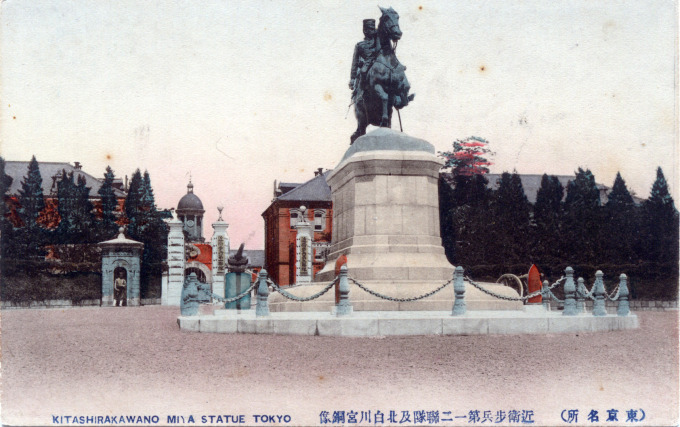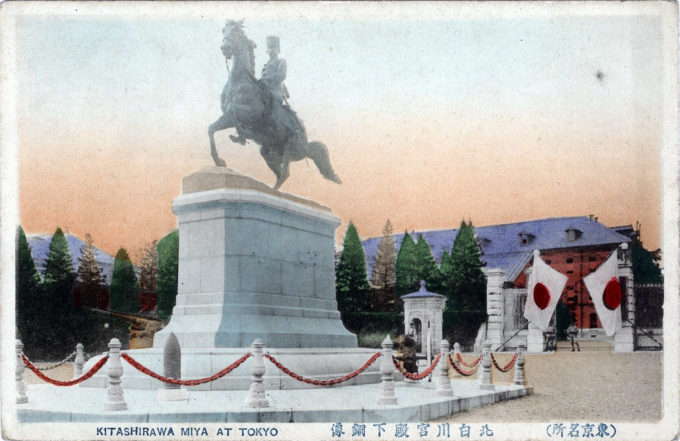
“Kitashirakawa no miya” statue, c. 1910, a bronze effigy erected in 1903, in Kitanomaru Park near Imperial Palace.
From the wiki: “Prince Kitashirakawa Yoshihisa (1847-1895) was the second head of a collateral branch of the Japanese imperial family, the Fushimi-no-miya, the oldest of the four branches of the Imperial dynasty allowed to provide a successor to the Chrysanthemum throne should the main imperial house fail to produce an heir.
“During the unrest of the Boshin War to overthrow the Tokugawa Shogunate, Prince Yoshihisa fled north with Tokugawa partisans of the following the Satsuma-Chōshū takeover of the city of Edo, and was made the nominal head of the ‘Northern Alliance’. Documents exist which name Prince Yoshihisa as ‘Emperor Tōbu’, but historians are divided as to whether or not Prince Yoshihisa was actually named emperor. Following the Meiji Restoration, in 1873 Emperor Meiji recalled all Imperial princes currently serving as Buddhist priests back to secular status. That same year he succeeded his younger brother, Prince Kitashirakawa Kasunari, as the second head of the new princely house of Kitashirakawa-no-miya.
“Prince Kitashirakawa Yoshihisa became a professional soldier, and was sent to Germany for military training. On his return to Japan in 1887, he was commissioned as a major general in the Imperial Japanese Army. After the outbreak of the First Sino-Japanese War of 1894-1895, he was transferred to the elite IJA 1st Division and participated in the Japanese invasion of Taiwan.
“During the invasion, he contracted malaria and died outside of Tainan (although there were rumors that he was killed in action by Taiwanese guerrillas). Prince Kitashirakawa Yoshihisa is thus the first member of the Japanese Imperial family known to have died outside of Japan, and the first (in modern times) to have died in war. Under State Shinto, he was elevated to a kami [god], and was enshrined in most of the Shinto shrines erected in Taiwan under the Japanese occupation, as well as in Yasukuni Jinja.”



Pingback: Prince Fushimi mansion, Tokyo, c. 1910. | Old Tokyo